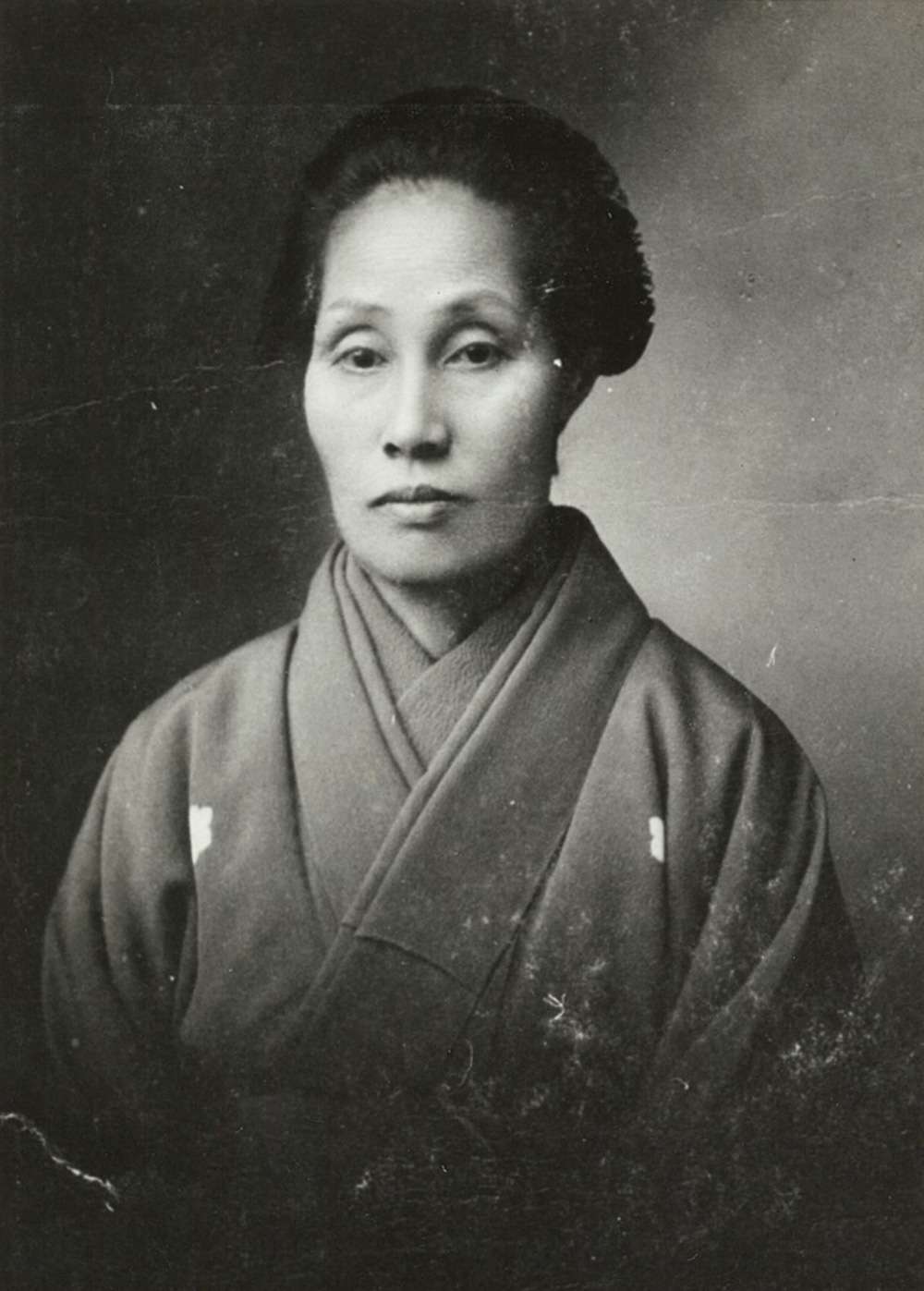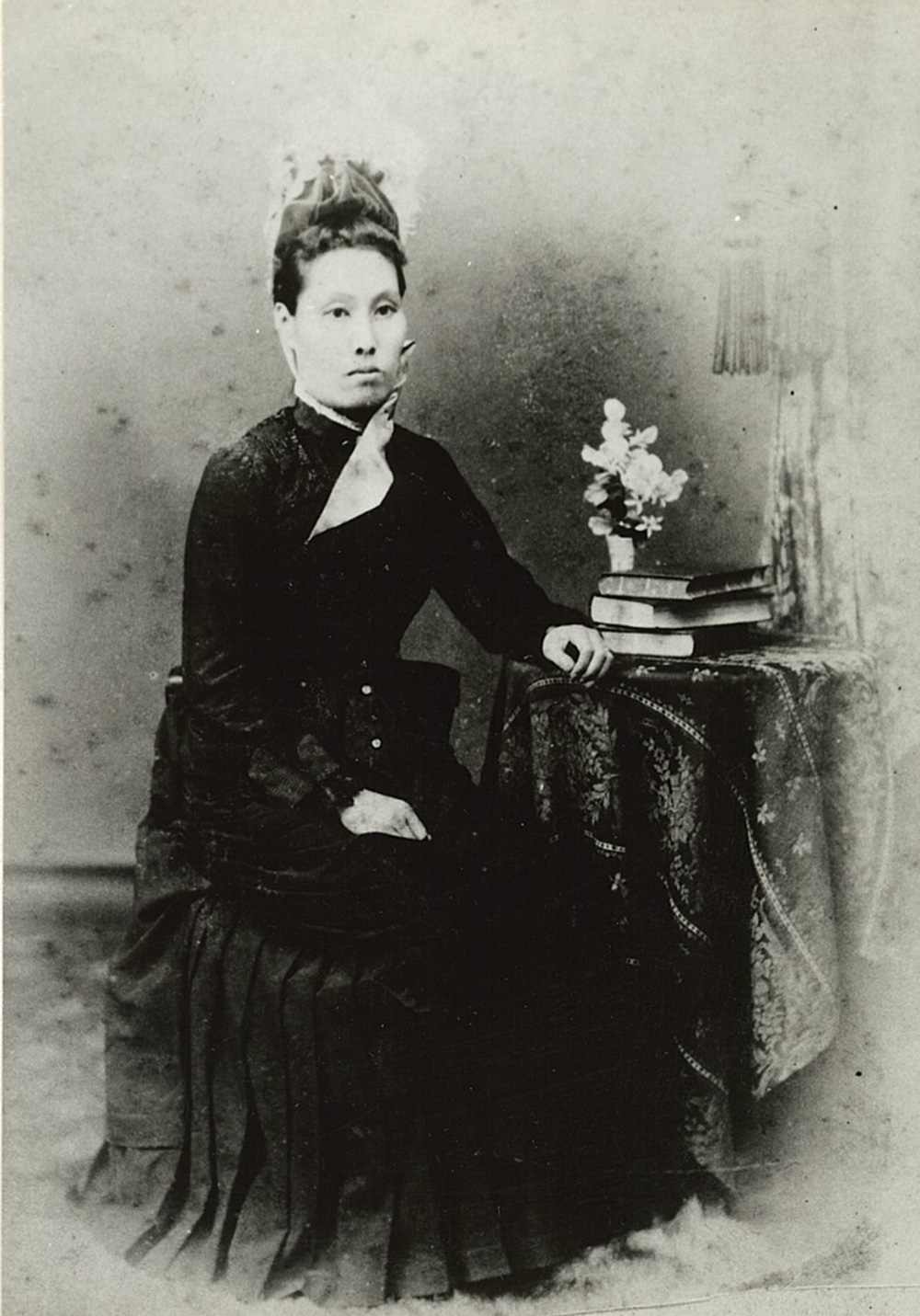2. Hunter and Aiko

The blooming of romance between E.H. Hunter and Aiko Hirano is described in dramatic detail in Morio Sanjo's novel Yoake no Hunter(Hunter in The Dawn).(1)
"Hunter rushed to Aiko and carried her, bedding and all, into the mat-floored indoor room. Aiko opened her eyes ever so slightly. ‘Mr. Hunter,' she said in a whisper. It was the most she could manage, as she was burning up with fever. Hunter felt the heat rising to his face.
‘You will be fine. I have something that will make you better.' Hunter lowered Aiko, along with the bedding, onto the mat. He reached in his bag, pulled out several packets of medicine, and poured the contents of one of them in Aiko's mouth." This was in 1868.

Aiko survived her fever and married Hunter. The couple's grandson Ryuhei recalls, "The medicine worked very well. Grandmother bragged that it must have been called tenderness."(2) The anecdote speaks volumes for Aiko's character. She and Hunter remained deeply in love for life. A servant of the Hunters, Fuku Oda, recounts the events of June 2, 1917, when Hunter passed away: "Aiko cut off a lock of her hair and gently placed it in the hands of her husband, who had just taken his last breath."(3)
Hunter and Aiko were blessed with three sons and one daughter: Ryutaro, Hansaburo, Edward(Eitoku), and Fujiko. Ryutaro grew up to be the second-generation proprietor of Osaka Iron Works. Hansaburo studied mining engineering and worked on the development of the Taio Gold Mine and the Mitate Mine. Edward played a role in the negotiation of patent rights to the Isherwood system. And Fujiko married the manager of Tempozan Works, named Nakamura. One can easily imagine that Hunter, being British, counted most heavily on Aiko to be his liaison with Japan and help him learn the language, culture, and customs. No doubt she also helped him in his work.
Hunter and Aiko were laid to rest together in the Kobe Foreign Cemetery on Mt. Futatabi. By their graves is an epitaph by former president Yosomatsu Matsubara that reads, "E.H. Hunter showed immense generosity in his love for Japan, his trust in the Japanese people, and his wedlock with Aiko Hanta, through which he set a lifelong example of international marriage." The Seventy-Five Year History concurs: "Aiko was a woman of rare wisdom who both rendered great assistance and service to her husband, and poured her energies into public services provided by the Patriotic Women's Association, the Social Welfare Organization, and the Kobe Nursery Academy. She passed away at the age of 89, rounding off a successful example of international marriage."(4) Let us take a fresh look at Aiko's photograph.
Bibliography
- 1三条杜夫『夜明けのハンター』2012年、 株式会社叢文社、 73p
- 2読売新聞大阪本社社会部編「国際結婚日立造船の土台築く」『実記百年の大阪』、昭和62年、朋興社、192p
- 3読売新聞大阪本社社会部編「国際結婚日立造船の土台築く」『実記百年の大阪』、昭和62年、朋興社、192p
- 4『日立造船株式会社七十五年史』昭和31年、日立造船株式会社 105p
Click here for various inquiries
- 1. Maizuru Maru
- 2. Hunter and Aiko
- 3. E.H. Hunter & Co. at Kobe Foreign Settlement No. 29
- 4. Rokko Maru: Wooden steamship on the "golden route"
- 5. E. H. Hunter, a man with Japanese spirit and Western technology(part 1)
- 6. Japanese spirit, Western technology (part 2)
- 7. Bronze statue of E.H. Hunter (part 1)
- 8. Bronze statue of E.H. Hunter (part 2)
- 9. Temple bell tuned to 122 cycles with Shosoin flute
